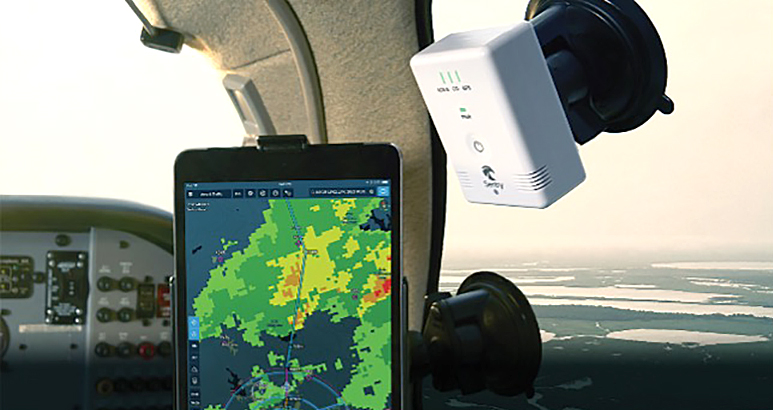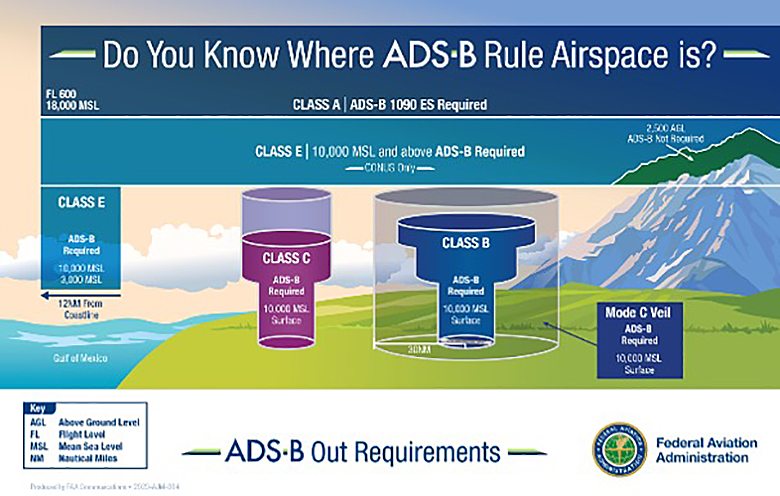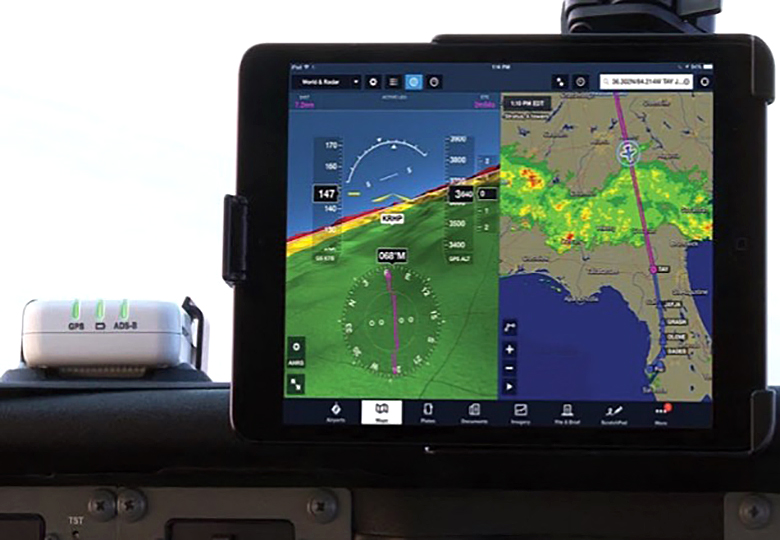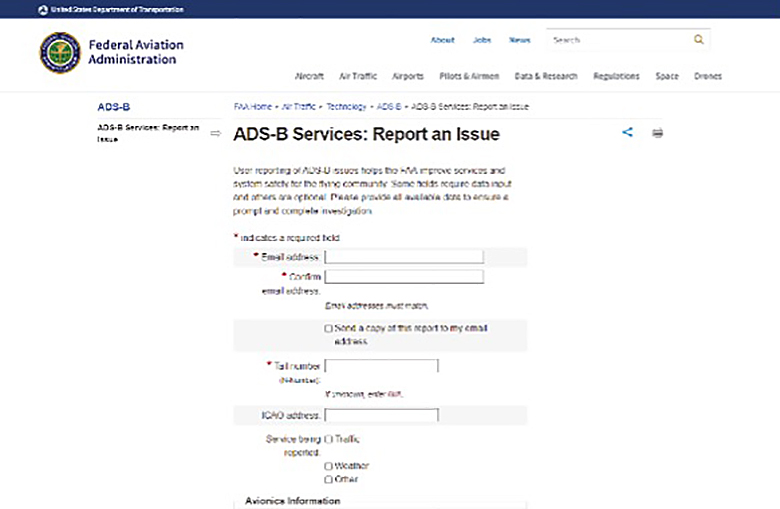Eyes in the Sky
Enhancing ADS-B Services with the Pilot Reporting Tool
By Elizabeth Keenan, FAA Surveillance and Broadcast Services

As a pilot, you are a trusted, collaborative steward of the National Airspace System (NAS) and safety is at the forefront. However, even the most diligent pilot can only see so much. Fortunately, Automatic Dependent Surveillance-Broadcast (ADS-B) provides real-time precision and shared situational awareness to pilots and air traffic controllers — expanding our knowledge of the NAS to more than meets the human eye.
One way to aid your fellow pilots and keep the flying community safe is to report any ADS-B system issues you may encounter. If you’ve chosen to equip with ADS-B In, you already know that the Traffic Information Service-Broadcast (TIS-B) and Flight Information Service-Broadcast (FIS-B) provide a new level of safety and efficiency by delivering traffic position reports and weather information in the cockpit. As more aircraft continue to equip with ADS-B In avionics, the efficacy of the ADS-B system is dependent on pilot issue reports.

Please report any ADS-B functionality issues to faa.gov/go/adsbreport.
“The ADS-B system is so integrated,” stated Glenn Meier, FAA Surveillance and Broadcast Services (SBS) engineering project lead. “It’s used by air traffic and pilots, but we don’t have test equipment in the cockpit, so we are dependent on pilot reports to serve as a second set of eyes and identify issues we cannot see on the ground.”

An ADS-B receiver allows you to add capabilities like weather in the cockpit to older aircraft without extensive modification.
What Is the ADS-B “Report an Issue” Form, and How Does It Work?
The ADS-B issue reporting form (faa.gov/go/adsbreport) is an online tool used to convey any ADS-B functionality issues to the FAA. It was developed as a way for pilots to serve as advocates for the ADS-B system.
“The issues submitted via the reporting form may not otherwise be visible without these reports,” said Meier. “Each report is valuable to us and provides an opportunity to further enhance the ADS-B system.”

The ADS-B Report an Issue form is a way for pilots to share feedback with the FAA.
While only four fields are required to submit an ADS-B issue report, pilots are encouraged to include additional details to enable a deeper analysis into the issue and a more thorough resolution. Information such as avionics manufacturer/model, location of the issue, and departure or destination site may also be included. An open “description” field enables pilots to detail specifics about the encountered issue so the researching team can narrow down on scope.
Once a form is submitted, it is routed to the appropriate FAA systems engineer, ADS-B subject matter expert, and/or other FAA personnel, depending on the issue. If more details are needed, pilots will be contacted using the email address provided within the form, and then the parties will communicate directly by email. Each ADS-B issue report submission is individualized and thoroughly researched until a resolution is obtained.
For example, where pilots have reported unseen TIS-B targets, or “ghost” targets, which are visible on displays but not out the window, FAA engineers have analyzed the locations of these reports and when possible, implemented system updates to reduce this rate of occurrence.
The ADS-B issue reporting tool will help the FAA continue to improve the ADS-B service, which provides unprecedented levels of situational awareness to pilots.
For reported FIS-B issues, investigations of submissions have led to many outcomes including: education about how weather reporting products work, identification of avionics issues, and, in some cases, awareness of erroneously functioning equipment — analysis of one report uncovered a loose antenna that impacted system functionality.
“This is a tool for all pilots — regardless of experience — created as an opportunity for the FAA to learn more about how the ADS-B system is performing, so we can ensure it is optimized for the flying community,” said Jamal Wilson, a management and program analyst with the FAA’s SBS group and recreational pilot. “As pilots, safety is our core tenet. These reports are just another way for us to help keep our skies safe.”
“When I started flying 23 years ago, all I had was a radio and transponder,” said Matt McCann, an engineer with SBS and pilot instructor. “I had to look out the window to see other aircraft. Now, with ADS-B In, I can see everything right in my cockpit, and I never saw that many airplanes before ADS-B In,” he added. “The ADS-B issue reporting tool will help the FAA continue to improve the ADS-B service, which provides unprecedented levels of situational awareness to pilots.”
Elizabeth Keenan is a communications specialist for the FAA’s Surveillance and Broadcast Services group. She frequents the Doylestown Airport to observe takeoffs and landings with her two young daughters who proudly dole out high fives to the general aviation pilots.
Reprinted with permission from FAA Safety Briefing. Visit the Flight Safety Briefing website: https://www.faa.gov/news/safety_briefing/



